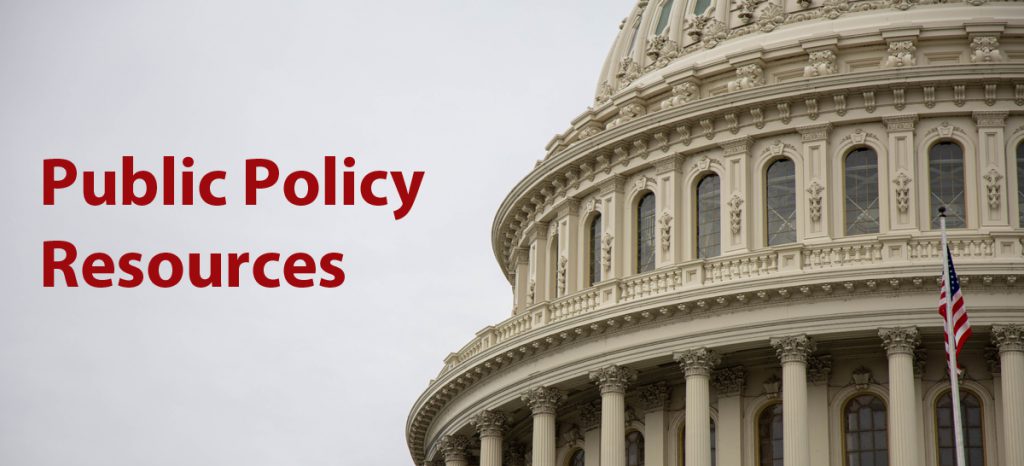
USDLA Public Policy
There are dozens of public policy issues related to digital/distance learning near and dear to the hearts of the USDLA Board of Directors and its members. Our most recent focuses include:
- The impact of Artificial Intelligence (AI) within education
- The lack of US distance/digital learning preparedness in our K-12 schools
- Workforce development pertaining to micro credentialing and re-training our workforce
- How to make more secondary education more accessible through digital/distance learning
Be sure to tune into our Free Friday Webinars and National Distance Learning Week (NDLW) where you can hear from experts on the educational policies shaping our country.
Share your Voice on Public Policy: Let us know what you’d like to learn in our upcoming Public Policy webinar series by clicking here to complete the proposal form. Webinars are one-hour and include Q&A. Questions, thoughts, ideas? Send an email to committee chair Alexandra Salas: asalas@usdla.org.
USDLA Announces Public Policy Week (PPW)
We will be hosting a Public Policy Week (PPW) starting in 2024. Stay tuned for additional details.
Shared Public Resources
Despite concerns, only 3% of colleges have developed student policy on AI
https://universitybusiness.com/despite-concerns-only-3-of-colleges-have-developed-student-policy-on-ai/
Political Interference in Higher Ed
https://www.aaup.org/issues/political-interference-higher-ed
House and Senate Far Apart on Education Funding for Fiscal Year That Begins Oct. 1
https://www.acenet.edu/News-Room/Pages/House-Senate-Far-Apart-Education-FY-24.aspx
Commentary – What Brown Center scholars will be watching in education policy and politics in 2023
https://www.brookings.edu/articles/what-brown-center-scholars-will-be-watching-in-education-policy-and-politics-in-2023/
Are School Reforms Liberal, Conservative, or Populist? Populism and Education Policy Opinions in the United States, Journal of School Choice, DOI: 10.1080/15582159.2023.2211799
https://www.tandfonline.com/doi/full/10.1080/15582159.2023.2211799
The National Digital Inclusion Alliance NDIA
FCC – Federal Communications Commission legislative proceedings and actions
www.fcc.gov
SBLN State Broadband Leaders Network – WHO is YOUR state broadband Director? Click on your state in the Broadband Directory
To Stay Up-to-date on E-rate, Rural Health Care, Spectrum Policies and Broadband Legislation
Sign up for SHLB Updates here
CooleyEd Education Policy, Technology & Business Check out updates here
National Broadband Map – Searchable by Address Search Now
Western Interstate Commission for Higher Education Go Now
Need to troubleshoot your internet connection? Here is What to Do When Your Internet’s Not Working
All Connect – Allconnect.com has curated a new set of Internet availability resources Check out:
https://www.allconnect.com/blog/back-to-school-speed-up-your-home-internet
https://www.allconnect.com/blog/student-internet-safety-guide
https://www.allconnect.com/blog/student-internet-deals-tech-discounts
Affordable Internet and Digital Learning Resources:
- Affordable Connectivity Program Guide
- This guide contains information about the FCC’s new Affordable Connectivity Program, which helps low-income families stay connected to the internet.
- How to Get Cheap or Free Internet | Reviews.org
- Learn how to easily compare internet plans and prices, where to find free internet, and more ways
- How Much Internet Speed Do I Need?
- We’ll help you figure out how many Mbps you need to stream, game, or work from home.
- How to Use Less Data on Zoom Calls | Reviews.org
- Tips to cutting back on data usage with Zoom
Home and Family Online Safety Resources
- How to Stay Safe Online: Internet Safety Tips and Resources
- Keep your kids and self safe online with these internet safety tips. Learn how to make stronger passwords, install antivirus software, and how using a VPN to keep you safe online.